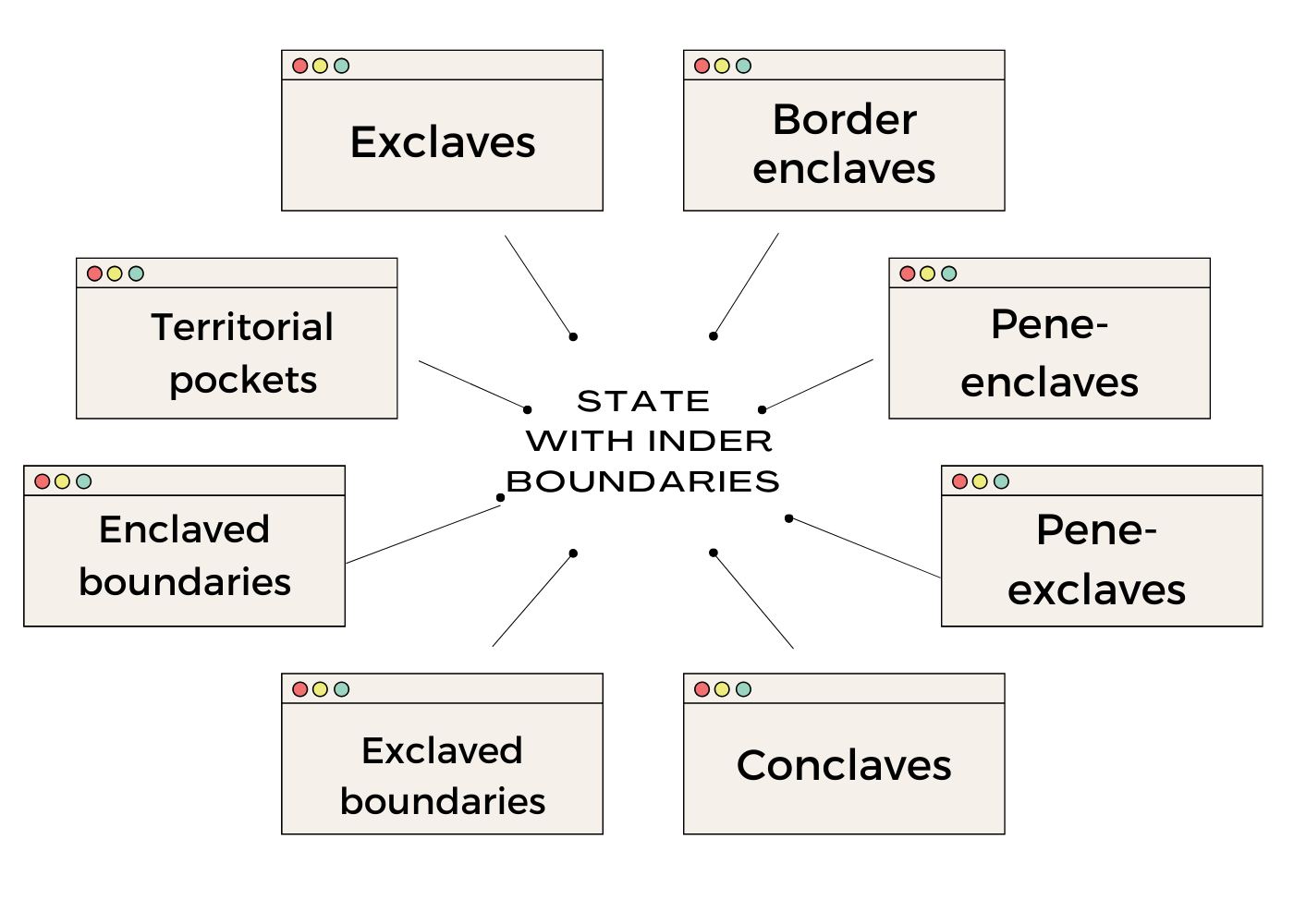Detailed content
1. Introduction to States with Interboundaries
States with interboundaries are characterized by their internal
divisions and external borders, which may result from historical,
cultural, ethnic, or administrative factors. These states often
exhibit diverse populations, languages, cultures, and economic
activities across their regions, leading to complex governance
structures and interrelated issues.
2. Historical Background
The concept of states with interboundaries has deep historical
roots, dating back to ancient civilizations where empires and
kingdoms encompassed territories with diverse populations and
geographic features. Examples include the Roman Empire, which
incorporated various regions with distinct cultural identities and
administrative structures. In the modern era, colonialism further
shaped the boundaries of many states, resulting in artificial
divisions that continue to influence geopolitics today.
3. Geopolitical Significance
States with interboundaries play a significant role in shaping
geopolitical dynamics at regional and global levels. Their
internal diversity can be a source of strength, fostering
innovation, cultural exchange, and economic development. However,
it can also lead to tensions, conflicts, and challenges in
governance, especially in managing diverse populations and
competing interests.
4. Challenges and Complexities
Managing states with interboundaries poses several challenges for
governments, including ensuring equitable representation,
addressing socio-economic disparities, and maintaining stability
and security. Ethnic and cultural differences may lead to
political tensions, separatist movements, or even violent
conflicts, as seen in regions like the Balkans, the Caucasus, and
Africa.
5. Territorial Disputes
The presence of interboundaries often exacerbates territorial
disputes between neighboring states. Competing claims over land,
resources, and historical narratives can escalate into diplomatic
standoffs or military conflicts. The resolution of these disputes
requires delicate negotiations, mediation, and sometimes
intervention by international organizations or third-party
mediators.
6. Resource Management
States with interboundaries must navigate the complexities of
resource management, including water, energy, and natural
resources. Disparities in resource distribution can exacerbate
socio-economic inequalities and exacerbate tensions between
different regions or ethnic groups. Effective resource management
strategies are essential for sustainable development and conflict
prevention.
7. Governance Structures
The governance structures of states with interboundaries often
reflect their internal diversity and historical legacies. Federal
systems, devolution, or autonomy arrangements may be adopted to
accommodate regional differences and promote local
self-governance. However, striking a balance between central
authority and regional autonomy remains a perpetual challenge,
requiring flexible and inclusive governance mechanisms.
8. Cultural and Linguistic Diversity
Cultural and linguistic diversity is a defining feature of states
with interboundaries, enriching their social fabric but also
posing governance and communication challenges. Multilingual
education, cultural preservation initiatives, and inclusive
policies are essential for fostering social cohesion and ensuring
the rights of linguistic and ethnic minorities.
9. Economic Integration and Development
Economic integration across regions within states with
interboundaries can foster trade, investment, and economic growth.
However, disparities in development and access to resources may
hinder equitable development outcomes. Regional development
strategies, infrastructure investments, and targeted policies are
essential for addressing these disparities and promoting inclusive
growth.
10. International Relations Implications
States with interboundaries have implications for international
relations, as their internal dynamics can spill over into regional
stability and global security. Neighboring states, regional
powers, and international actors may seek to influence internal
developments for strategic interests, leading to geopolitical
rivalries, alliances, and diplomatic maneuvers
11. Case Studies
Analyzing specific case studies of states with interboundaries can
provide insights into the complexities and challenges they face.
Examples include India with its diverse states and regions,
Nigeria with its ethnic and religious diversity, and Belgium with
its linguistic divisions. Each case offers valuable lessons for
understanding the dynamics of governance, conflict resolution, and
development in states with interboundaries.
12. Conclusion
In conclusion, states with interboundaries represent a complex
intersection of geography, politics, culture, and history.
Understanding their dynamics is essential for addressing
governance challenges, managing conflicts, and promoting peace,
stability, and development. By adopting inclusive policies,
fostering dialogue, and embracing diversity, these states can
harness their potential as engines of progress and prosperity
within the global community.
